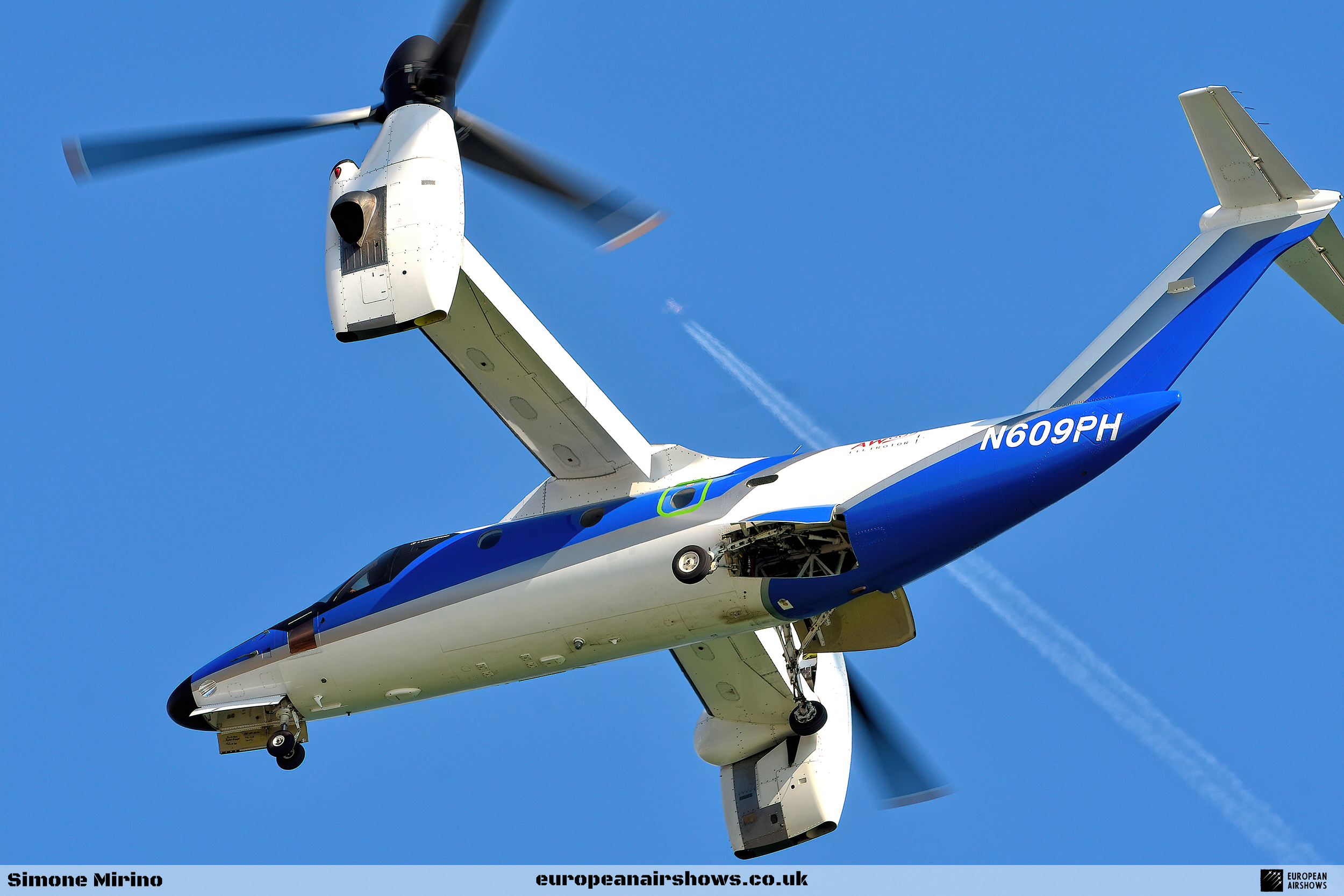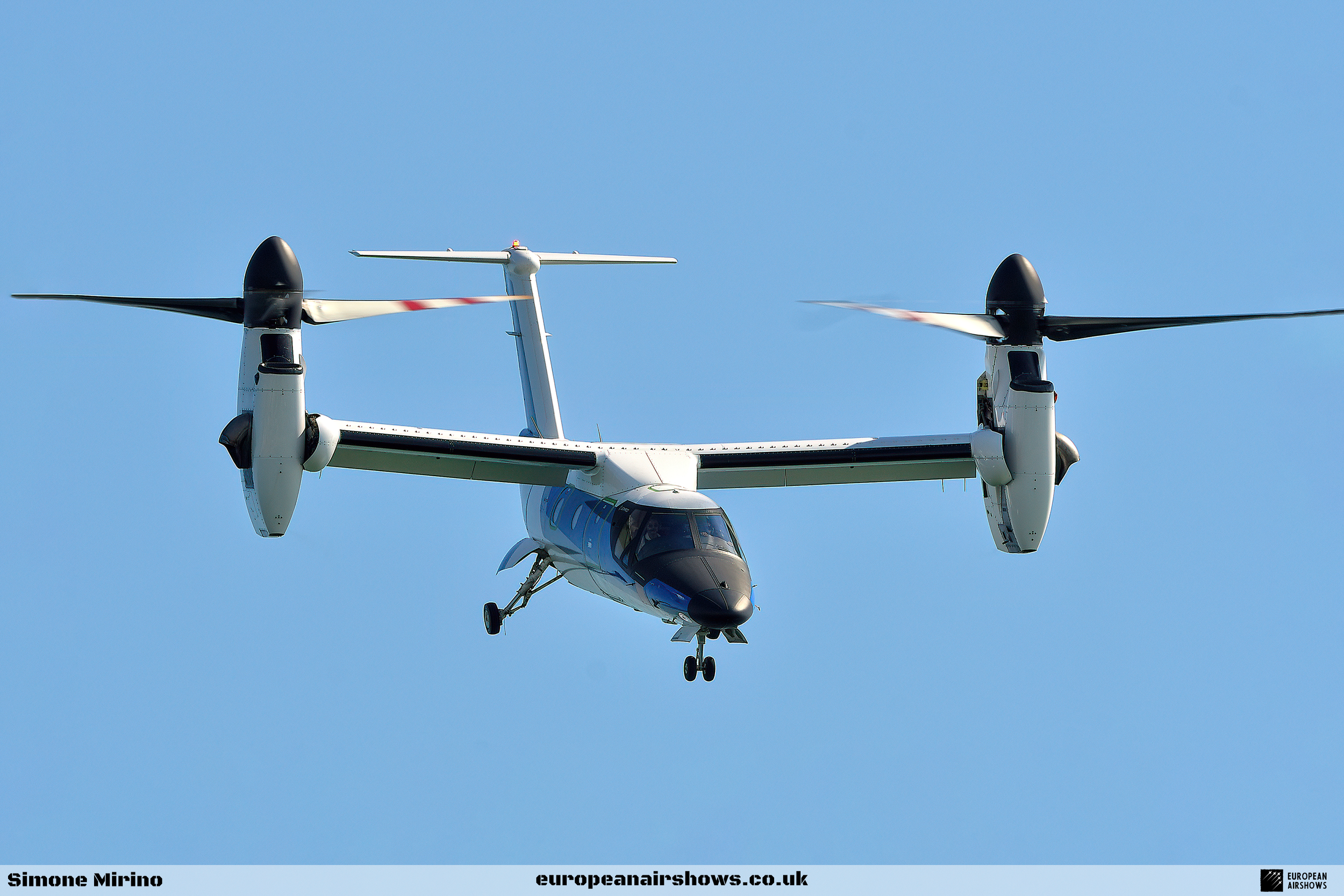
March 7 / AW609 first flight
First flight 7 March 2003
AgustaWestland AW609
Picture this: an aircraft that can lift off like a helicopter, hovering defiantly above the ground, then tilt its wings and zoom off like a plane, slicing through the sky at speeds that leave traditional choppers in the dust. That’s the AgustaWestland AW609, a tiltrotor that’s been turning heads—and occasionally raising eyebrows—since its story began in the late 1990s. This isn’t just another entry in the aviation annals; it’s a saga of ambition, innovation, and a fair share of turbulence, both literal and figurative.
The AW609’s origin story kicks off in 1996, when Bell Helicopter, a Texas-based rotorcraft legend, decided to take its tiltrotor expertise to the civilian world. Bell had already made waves with the XV-15 in the 1970s, a funky experimental craft that proved tiltrotors—aircraft with rotating nacelles that switch between helicopter and airplane modes—were more than just a sci-fi dream. The XV-15 paved the way for the V-22 Osprey, a military marvel that debuted in the late 1980s. But Bell wasn’t content with just serving the armed forces; they saw dollar signs in a civilian tiltrotor that could zip executives around or ferry workers to offshore oil rigs. Teaming up with Boeing, another aviation titan, Bell kicked off the project in 1996, dubbing it the BA609. However, Boeing’s enthusiasm fizzled by March 1998, leaving Bell to find a new dance partner.
Enter Agusta, an Italian helicopter maestro with a passion for pushing boundaries. In September 1998, Bell and Agusta shook hands and formed the Bell/Agusta Aerospace Company (BAAC), a joint venture hell-bent on making the BA609 a reality. This wasn’t a military beast like the Osprey; the BA609 was aimed at the civil market—think plush VIP rides, emergency medevacs, and oil platform shuttles. The dream took flight on March 7, 2003, when test pilots Roy Hopkins and Dwayne Williams lifted the first prototype off the ground near Bell’s Texas digs. That maiden flight was a fist-pump moment, showing the world that a civilian tiltrotor wasn’t just a pipe dream. But as any good story goes, the path forward was about to get bumpy.
Bell was hitting some rough financial turbulence in the early 2000s. The company had lost ground in both civil and military helicopter markets, and the V-22 Osprey program, which shared DNA with the BA609, was stumbling through its own mess—two fatal crashes in 2000 claimed 27 lives, casting a long shadow over tiltrotor tech. The BA609’s development slowed to a crawl as funding dried up and skepticism grew. By 2008, the aviation landscape was shifting: very light jets and beefy offshore helicopters like the Sikorsky S-92 were stealing the spotlight, making some wonder if the tiltrotor’s moment had passed. Bell started eyeing the exit, distracted by shinier prospects like the V-280 Valor, a bigger tiltrotor pitched at the military.
Meanwhile, AgustaWestland—Agusta’s new identity after merging into the Italian Finmeccanica group—was itching to take the reins. In 2009, CEO Giuseppe Orsi dropped hints about buying out Bell to turbocharge the project. The deal went down in 2011, with AgustaWestland snagging full ownership and slapping a new name on the bird: the AW609. Bell didn’t vanish entirely—they stuck around to tinker with components and help with certification—but the Italians were now calling the shots. Under AgustaWestland’s watch, the AW609 got a glow-up starting in 2012. Engineers shaved off drag by 10% with slick aerodynamic tweaks, swapped in a beefier Pratt & Whitney Canada PT6 engine, and decked out the cockpit with touchscreen wizardry that made it a breeze for helicopter pilots to hop aboard.
But here’s where the plot thickens: getting the AW609 certified was like trying to herd cats while riding a unicycle. The Federal Aviation Administration (FAA) had to cook up a whole new rulebook for tiltrotors, blending fixed-wing (Part 25) and helicopter (Part 29) regs with some custom tiltrotor spice. This wasn’t a quick recipe—delays piled up as the FAA, AgustaWestland, and the tech itself wrestled with the details. Then, on October 30, 2015, disaster struck. The second prototype crashed near Santhia, Italy, claiming the lives of both test pilots. The fleet was grounded, investigations launched, and the AW609’s future hung in the balance. Though the crash’s cause stayed under wraps, it was a gut punch that reminded everyone of the high stakes in pioneering aviation.
AgustaWestland, now rebranded as Leonardo in 2016, didn’t throw in the towel. They pushed forward, tweaking the design and chasing that elusive FAA nod. Certification predictions kept sliding—2017 became 2019, then 2020—as the team ironed out kinks and proved the AW609’s safety chops. Meanwhile, the tiltrotor was turning heads on the customer front. In 2015, the United Arab Emirates’ Joint Aviation Command signed up as the launch buyer for a search-and-rescue variant, eyeing three aircraft (with options for three more) to scour the desert and coastlines at blistering speeds. The AW609’s promise? Fly twice as fast and twice as far as a helicopter, all while landing anywhere it darn well pleased.
To sweeten the deal stateside, Leonardo set up shop in Philadelphia, Pennsylvania, turning it into an AW609 hub. In 2022, the first production model, dubbed AC5, took flight from Philly, a shiny symbol of the tiltrotor’s final form. The momentum kept building: in April 2024, the AW609 strutted its stuff during ship trials aboard the Italian carrier ITS Cavour. Picture it—tilting its nacelles, landing on a rocking deck, and proving it could play in naval and offshore arenas. The Italian Navy gave a thumbs-up, and the AW609’s versatility shone brighter than ever.
Fast forward to 2025, and the AW609 is teetering on the edge of glory. Certification is so close you can taste it, and Leonardo’s gearing up to crank out these bad boys in earnest. Imagine the possibilities: whisking CEOs from downtown helipads to mountain retreats at 275 knots, or rushing medics to disaster zones where runways are a no-go. The AW609 isn’t just an aircraft; it’s a game-changer, blending helicopter agility with airplane hustle in a way that’s downright futuristic.
So, there you have it—the AW609’s rollercoaster ride from a Bell-Boeing brainchild to a Leonardo-led legend. It’s a tale packed with big dreams, bigger setbacks, and a relentless drive to rewrite aviation’s playbook. Through financial woes, technical tangles, and a tragic loss, the tiltrotor dream endured. Now, poised to hit the skies for real, the AW609 is ready to make history—and maybe even a few jaws drop along the way.
AW609 Facts
Revolutionary Tiltrotor Design: The AW609 is a game-changer in aviation, blending the best of two worlds: it takes off and lands vertically like a helicopter but cruises like a fixed-wing airplane. Its rotating engine nacelles tilt the rotors from vertical for hovering to horizontal for high-speed flight, allowing it to reach remote locations—like city rooftops or offshore platforms—that traditional planes can’t access.
Blazing Speed That Outpaces Helicopters: Clocking in at over 275 knots (316 mph or 509 km/h), the AW609 is one of the fastest rotorcraft ever built. This incredible speed leaves most helicopters, which typically cruise at 150-160 knots, in the dust, making it a top choice for urgent missions like medical evacuations or rapid response operations.
Epic Range for Long-Haul Flights: With a range of up to 1,000 nautical miles (1,852 km) without refuelling, the AW609 can go the distance—far beyond what most helicopters can manage. Imagine flying from New York to Chicago or supporting offshore oil rigs deep in the ocean without a pit stop. That’s the kind of endurance this aircraft delivers.
Conquers the Elements Like a Champ: The AW609 laughs in the face of bad weather. It’s certified to fly in known icing conditions with its advanced ice-protection system and can climb to 25,000 feet to soar above storms, thanks to its pressurized cabin. This rugged capability ensures it keeps going when other aircraft are grounded.
A Swiss Army Knife of the Skies: Versatility is the AW609’s middle name. It can transform for missions like plush VIP transport, daring search and rescue, life-saving medical evacuations, offshore support, or even secretive military ops. Whatever the job, this aircraft adapts with ease, making it a multi-tool for modern aviation.
Cockpit Tech Straight Out of Sci-Fi: Pilots of the AW609 get to play with a futuristic Collins Aerospace Fusion avionics suite, featuring three giant touchscreen displays that make flying feel like a high-tech video game. Add in a triple-redundant fly-by-wire system—think self-correcting digital controls—and you’ve got a setup that’s as safe as it is slick.
Luxury Meets Utility in the Cabin: Step inside the AW609, and you’ll find a spacious cabin that seats nine passengers plus two pilots, with a standing height of 5 feet (1.52 meters). It’s pressurized for high-altitude comfort and packed with soundproofing tech, turning a high-speed flight into a quiet, plush ride—perfect for VIPs or weary rescuers.
Safety That Sets the Bar Sky-High: The AW609 doesn’t mess around with safety. It meets the toughest FAA standards for both planes and helicopters, boasting redundant systems—like backup engines and controls—so it can keep flying even if something fails. Plus, it can autorotate like a helicopter, giving pilots an extra ace up their sleeve.
Two Decades of Grit and Innovation: This aircraft’s story is a saga of ambition. First flown in 2003, the AW609 has been honed over 20+ years by Bell and AgustaWestland (now Leonardo Helicopters). Despite challenges—including a tragic 2015 crash—the program’s relentless testing and upgrades have made it a symbol of aerospace perseverance.
The Future of Civilian Flight Is Here: Poised to be the world’s first civilian-certified tiltrotor, the AW609 is targeting VIPs, offshore operators, and emergency services with its $25 million price tag. It’s also catching the military’s eye for special ops and rescues. This isn’t just an aircraft—it’s a new era of fast, flexible, point-to-point travel.






